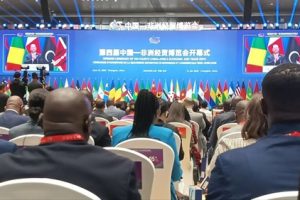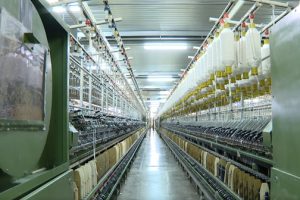Ethiopia has initiated the Climate-Resilient Green Economy (CRGE) initiative to reduce the adverse effects of climate change and to build a green economy. Besides the direct effects such as an increase in average temperature or a change in rainfall patterns, climate change also presents the necessity and opportunity to switch to a new, sustainable development model.
The CRGE initiative strategy was developed to build a green economy. Several government institutions have been driving the initiative to enable keeping greenhouse gas emissions low and sustainable growth model.
The majority of poor people are principally dependent on agriculture. It is also dependent on farmers managing land well to sustain water supplies, biodiversity and other environmental services. Climate change, rising population, resource scarcities and price volatilities put them all under pressure. An integrated perspective that works operationally is needed one that makes economic, social and environmental sense and that inspires stakeholders.
Ethiopia is one of the first countries in Africa to develop a green growth strategy. Ethiopia’s leadership, and its early attempts through greening its economy to achieve more inclusive growth, are of real interest for a world in which alternative growth models for long-term sustainable development.
Meanwhile, social equity has rapidly become a priority in government, business and civil society. The CRGE’s goal is to increase economic growth so as to leap from least-developed to middle-income country status, whilst at the same time reducing greenhouse gas (GHG) emissions and increasing climate resilience.
Last year, Prime Minister Dr. Abiy Ahmed launched the tree-planting exercise as part of country’s Green Legacy Initiative which aimed to counter the effects of deforestation and climate change in the drought.
More than 350 million trees were planted in a single day, 29 July 2019 which is part of to plant a total of four billion indigenous trees across the country breaking the world record held by India held the record in 2016 for the most trees planted in one day and which stood at 50 million trees. In a record-breaking day last rainy season, at the Gulele Botanical Garden in Addis Ababa, Ethiopia launched an historic tree planting campaign. Over 350 million trees were planted in an ambitious move to counter the effects of deforestation and climate change. The event is part of Ethiopian Prime Minister Abiy Ahmed’s Green Legacy Initiative. It aimed at planting 200 million trees in a single day, but exceeds in 1,000 sites across the country.
The tree planting event was attended by a representative of the UN Environment Programme’s
Liaison Office to Africa Union Comm ission, UN Economic Commission for Africa and representative to Ethiopia, and whose support for this ambitious action was crucial, as well as other United Nations Agencies and various international organizations.
The Prime Minister is also aspiring to repeat the same success this year and is following up seedling preparations. Last Wednesday also, Abiy met with key stakeholders to review the national green legacy initiative and the preparations for planting this Ethiopian rainy season. He discussed with key stakeholders including national steering committee members, technical committee members, regional presidents and influential personalities that will be engaged in public mobilization.
Citing key success factors from last year’s planting season as great public mobilization, active engagement of government leadership, institutional coordination and stakeholders’ participation, the need to build on these good experiences was indicated.
While the target for this year is to plant 5 billion trees, preparations to ready the required number of seedlings has been underway since the end of last year’s planting season.
Abiy emphasized the importance of continuity and finishing what has been started, indicating the Green Legacy initiative overall goal of planting 20 billion trees within the next few years.
“I reviewed the seedling preparations being undertaken in Bishoftu nurseries ahead the 5 billion Green Legacy planting season. Using precision technology, the progress made thus far is quite remarkable and greatly supports our long term greening goals,” the PM posed on his facebook page on Sunday.
Recently, he also presented updates regarding the status of the Addis Ababa greening projects which are linked to promoting urban tourism and creating a livable city.
The United Nations estimates that Ethiopia’s forest coverage has declined drastically to a low of just 4 percent in the 2000s from 35 per cent a century earlier. As to the UN Environment’s Africa Office, afforestation is the most effective climate change solution to date and with the new record set by Ethiopia, other African nations should move with speed and challenge the status quo.
Africa has what it takes to spearhead this global push and as the most affected and vulnerable continent, climate change mitigation must be the topmost priority in the coming days.
Many African countries have recently engaged in massive tree planting campaigns including Kenya who has recently, with support from the UN Environment Programme, launched the “Greening Kenya Initiative” to reverse the declining forest covers.
UN Environment Programme is working with countries across the continent to replicate such initiatives to stop deforestation and increase forest cover. This is crucial in honoring African countries’ commitments to mitigate climate change and contribute to the achievement of the UN Decade on Ecosystem Restoration.
According to documents, the record-breaking mass tree planting exercise championed by Ethiopia inspired new greening efforts across the world, which is currently plagued by droughts, flooding, soil erosion and extreme weather conditions as humanity pays for wanton destruction of forests.
A recent study indicated that planting 500 billion trees could remove one-fourth of the carbon in the atmosphere. It is encouraging to see countries championing one of the largest reforestation campaigns. But expanding forest cover is not an event but a process that should be guided by political will and commitment across the board.
Trees provide many ecosystem services and environmental benefits for the planet as a whole. As they grow, they absorb and store carbon dioxide major driver of global heating. In a scientific paper published in the Science magazine, researchers estimate that a worldwide tree planting programme could remove two thirds of all the emissions that have been pumped into the atmosphere as a result of human activities.
Researchers found that tree restoration was among the most effective strategies for climate change mitigation. They show that the global potential tree coverage stands at 4.4 billion hectares of canopy under the current climate. Planting trees is therefore considered the biggest and cheapest way to tackle the climate crisis.
The Ethiopian Herald May 21/2020
BY TSEGAYE TILAHUN




